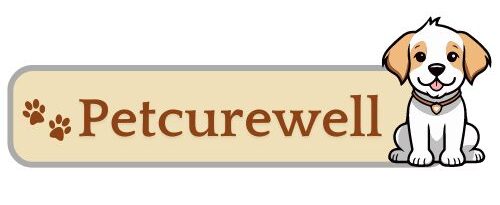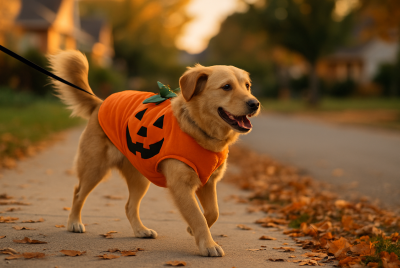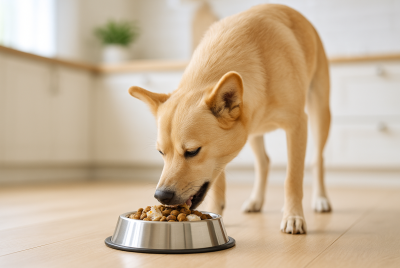Dog Food and Water Dispenser: Smart Picks & Tips
We may earn a commission for purchases made using our links. Please see our disclosure for more details.
You love your pup like family—and that shows up in the little daily things: clean bowls, fresh water, and a feeding routine that just… works. A well-chosen dog food and water dispenser can take the mental load off your plate, keep your dog hydrated, and support healthy portions without you hovering over every meal. In this guide, you’ll learn how to pick the right style (gravity or automatic), how big it should be, what materials are safest, and how to keep everything clean and stress-free.
Affiliate note: I may earn from qualifying purchases at no extra cost to you.
Why a dog food and water dispenser can be a game-changer
Think of a dispenser as your “set-it-and-remember-it” helper. It smooths out feeding times, keeps water available, and reduces mess. For busy households, that predictable routine helps dogs feel safe and settled. And for you? Fewer frantic texts to roommates like, “Did anyone feed Milo?!”
Gravity vs. automatic: which style fits your routine
- Gravity systems let kibble or water flow as the bowl empties—simple, affordable, no app required.
- Automatic dog feeders schedule exact portions at specific times, sometimes with Wi-Fi, battery backup, and voice prompts.
If your dog free-feeds politely, gravity can be perfect. If portion control matters (hello, treat-motivated besties), timed, measured meals from an automatic feeder are a better fit.
Size & capacity: matching bowls to breed and household
Capacity matters more than you think. Small tanks are fine for a toy breed; large dogs and multi-pet homes need bigger reservoirs so you’re not refilling twice a day. As a quick hydration guide, many mammals (including dogs) typically need about 44–66 mL of water per kilogram of body weight per day—and more in hot weather or with exercise.
Materials & design: plastic, stainless, ceramic
- Stainless steel: Durable, low-porosity, resists odors—great for hygiene.
- Glazed ceramic: Heavy, stays put; make sure it’s lead-free and chip-free.
- BPA-free plastic: Light and inexpensive; replace if it scratches or clouds.
Look for non-skid bases, easy-lift handles, and wide mouths for scrubbing.
Water delivery: fountain flow or gravity sip?
Some dogs drink more when water moves (sound and flow encourage sipping). Pet fountains circulate and filter water; gravity waterers are silent and simple. Picky drinkers or dogs on dry food often benefit from fountains. Large, unfussy drinkers? Gravity usually wins for capacity and convenience.

Portion control & healthy weight (what vets emphasize)
Portioning matters. In controlled studies, dogs offered larger portions eat more, which can nudge weight upward over time. Automated feeders that cap servings can help you stick to the plan.
And if you’re wondering how common extra pounds are: in 2024, 35% of dog owners surveyed by APOP categorized their dogs as overweight or obese—reminding us that many pups benefit from measured meals.
Hygiene & cleaning: simple routines that prevent yuck
Moisture + food residue = a party for bacteria. Studies show bowl contamination varies with food type, cleaning method, and bowl material, with wet food tending to harbor more microbes. Following proper washing guidelines significantly lowers bacterial loads.
Easy routine:
- Wash food bowls after each meal (especially with wet food).
- Wash water bowls daily; swap fountain filters as directed.
- Dishwash when allowed by the manufacturer; hot cycles help.
If feeding time ever gets… aromatic (muddy yard + surprise spray), keep this calm step-by-step guide handy on getting skunk smell out of a dog for a fast, effective reset.
Smart features worth paying for (and what to skip)
- Actually useful: precise portion scheduling, low-food alerts, battery backup, stainless contact surfaces, quiet motors, and child/pet-proof locking lids.
- Nice-to-have: voice messages, camera check-ins for anxious new pet parents.
- Skip if you won’t use it: rainbow LEDs, complex social feeds, or anything you’ll disable in week two.
Multi-pet households, microchip doors & feeding zones
If one dog steals food from another, look into microchip-controlled bowls or feeders behind pet doors that unlock only for the right pet. You can also split feeding zones: fountain in a common area, feeder in a quiet corner for your slow eater.
Special cases: puppies, seniors, and flat-faced breeds
- Puppies: more frequent, smaller meals—automatic scheduling is a sanity saver.
- Seniors: elevated bowls can ease neck strain; keep water easy to find.
- Brachycephalic (flat-faced) dogs: choose shallow bowls and slower flow to reduce gulping.

Placement & setup for fewer spills, more sips
Keep the dog food and water dispenser away from high-traffic corners so nervous drinkers aren’t startled. Add a silicone mat to corral drips, and avoid direct sun to minimize algae in water reservoirs and biofilm in fountains.
Training your dog to love the dispenser
New device jitters are normal. Try:
- Let them investigate while it’s off.
- Toss treats near it; then inside the bowl.
- If it’s automatic, run the motor while you’re there, praising calm behavior.
- Keep mealtimes predictable—dogs thrive on routine.
Troubleshooting common issues
- Oily kibble jams the chute? Downsize kibble or switch brands; clean chute weekly.
- Slime in the bottle? Daily rinse, weekly scrub; replace filters on schedule.
- Overeating with gravity feeders? Move to a timed automatic feeder or pair gravity with a slow-feeder bowl insert.
- Splash zones? Try a spill-proof water rim or a fountain with a gentler spout.
Our 5 Amazon picks (quick reviews)
(Product names provided for easy searching; verify size and warranty details with the seller.)
1) Amazon Basics Gravity Pet Food Feeder and Waterer – 2-Pack
What it is: A budget-friendly gravity dog food and water dispenser combo for straightforward, no-frills use.
Features: Translucent reservoirs, side handles, non-skid feet.
Pros: Affordable, simple, multiple sizes; good for polite free-feeders.
Cons: Not for portion-restricted diets; tall bottles can be awkward to wash by hand.
Best for: Busy homes that want reliable, low-maintenance feeding.
Review snapshot: Owners love the value; a few note deeper cleaning takes a bottle brush.

2) Petmate Replendish Gravity Waterer with Microban
What it is: A large-capacity gravity waterer that slows refills to minimize spills.
Features: Microban-treated base, screw-on bottle, sizes up to large capacities.
Pros: Big reservoir for large breeds/multi-dog homes; sturdy base.
Cons: Like all gravity units, you must clean regularly to avoid biofilm.
Best for: Thirsty dogs, warm climates, households that need fewer refills.
Review snapshot: Praised for capacity; occasional users wish the neck were wider for scrubbing.

3) PetSafe Drinkwell 2-Gallon Pet Fountain
What it is: A filtered fountain that encourages drinking with a steady stream.
Features: Carbon and foam filters, adjustable flow, large 2-gallon tank.
Pros: Many dogs drink more; filters improve taste; quiet motor.
Cons: Filters add recurring cost; monthly deep-clean recommended.
Best for: Picky drinkers, dry-kibble diets, and homes aiming to boost hydration.
Review snapshot: Fans say water stays fresher-smelling; a few mention pump maintenance if hair builds up.

4) PETLIBRO Automatic Pet Feeder (5L) with Stainless Steel Bowl
What it is: A smart feeder that schedules exact meals—think “coffee machine for kibble.”
Features: Multiple meals/day, portion control, voice recorder, stainless bowl.
Pros: Helps manage weight; food-contact metal surface; secure lid.
Cons: App-free models require setting on the unit; hopper needs periodic wipe-downs.
Best for: Dogs who thrive on routine and measured meals.
Review snapshot: Common praise for reliability; occasional users wish for bigger hoppers for giant breeds.

5) WOPET 6L Automatic Pet Feeder (Wi-Fi)
What it is: App-controlled timed feeder with generous 6L capacity.
Features: Remote scheduling, battery backup, anti-jam design.
Pros: Control from your phone; helpful alerts; large bin.
Cons: Wi-Fi setup can be fussy; like all auto-feeders, it still needs cleaning.
Best for: Pet parents who travel or work long shifts but want consistent portions.
Review snapshot: Users love the convenience; a few report learning curves with the app.

Comparison table at a glance
| Model | Key Spec(s) | Warranty | Approx Price/Tier | Best For |
| Amazon Basics Gravity Feeder & Waterer (2-Pack) | Simple gravity set; translucent reservoirs; non-skid | Limited (check seller) | $ | Budget, easy setup |
| Petmate Replendish Gravity Waterer | Large capacity; Microban base; screw-on bottle | Limited (check manufacturer) | $–$$ | Big drinkers, multi-dog homes |
| PetSafe Drinkwell 2-Gallon Fountain | Circulating water; dual filters; adjustable flow | Limited (check manufacturer) | $$ | Picky drinkers; fresher-tasting water |
| PETLIBRO Automatic Feeder (5L) | Timed portions; voice; stainless bowl | Limited (check brand) | $$ | Portion control & routine |
| WOPET 6L Automatic Feeder (Wi-Fi) | App control; battery backup; anti-jam | Limited (check brand) | $$–$$$ | Remote scheduling & larger capacity |
Price tiers are relative ($ budget / $$ mid / $$$ premium).
Care calendar: how often to wash, swap filters, and refresh
- Daily: Rinse water bowls/fountain lid; refill fresh water.
- After each wet-food meal: Wash feeder bowl.
- Weekly: Deep-clean bottles, hoppers, and fountain pumps; sanitize if manufacturer allows dishwasher cycles.
- Monthly: Replace fountain filters as specified; check gaskets and seals; inspect for scratches (replace worn plastic).

Research-backed notes (why these tips matter)
- Hydration needs: Veterinary references suggest a ballpark of ~44–66 mL/kg/day, adjusting for weather, activity, and diet moisture—handy when sizing water capacity. (See the MSD Veterinary Manual overview on small animal nutrition.)
- Hygiene & safety: A PLOS One 2022 study found that following FDA-style bowl-washing guidance reduced bacterial contamination compared with typical habits at home—underscoring why daily cleaning matters.
Want a friendly, step-by-step read for those… unusually smelly emergencies? Here’s our guide to removing skunk odor from dogs—save it before your next midnight backyard adventure.
FAQs
How often should I clean a dog food and water dispenser?
Daily for water contact surfaces; after each wet-food meal for bowls; and weekly for deep cleans of reservoirs, chutes, and pumps. If your unit is dishwasher-safe, hot cycles help sanitize thoroughly.
Is a gravity feeder safe if my dog tends to overeat?
If your dog is food-motivated or needs weight management, choose a timed automatic feeder to control portions. Larger served portions are linked to greater intake in dogs, so measured meals are your friend.
Do fountains really make dogs drink more?
Many dogs prefer running water and will sip more when it’s filtered and moving. Fountains also help keep water fresher-tasting—especially helpful for dry-food eaters.
How big should my water reservoir be?
Use your dog’s body weight and the 44–66 mL/kg/day rule of thumb to estimate daily intake, then size up for hot weather and multiple pets. For large breeds or pack households, high-capacity gravity waterers or 2-gallon fountains reduce refills.
Are automatic feeders useful for weight loss plans?
Yes—systems that individualize food access and automate portions can support structured weight-loss programs when used with your vet’s plan.
Final thoughts
The “best” dog food and water dispenser is the one that fits your dog’s personality and your lifestyle. Start with the basics—capacity, materials, and cleaning—then add features you’ll actually use (not the ones that sound cool but gather dust). Keep portions consistent, water fresh, and routines calm and predictable. You’ve got this—and your dog will feel the love every time the bowl fills.
Soft CTA: Ready to upgrade? Choose one pick above, set reminders to clean, and enjoy the peace that comes from a healthy, happy daily rhythm.




